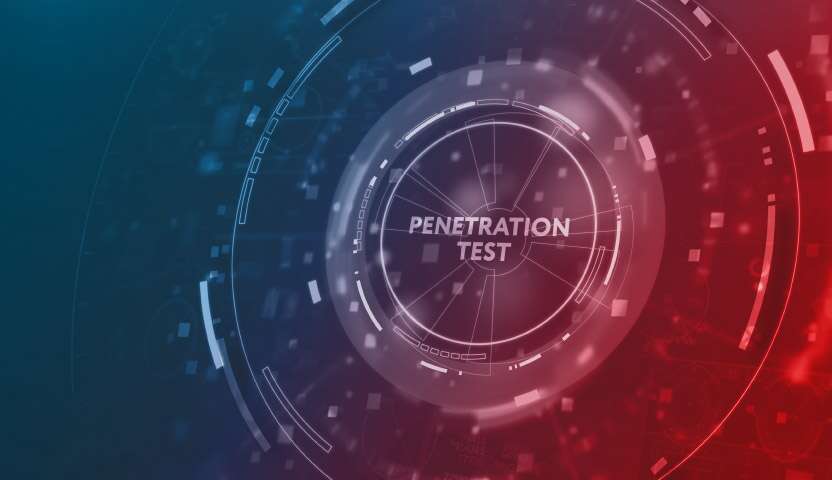Introduction:
Welcome to our in-depth exploration of the best penetration testing (pentesting) tools. In today’s digital landscape, security is paramount, and organizations often employ ethical hackers to identify vulnerabilities in their systems. In this blog post, we’ll take you through some of the most powerful and widely used pentesting tools, providing a real-time guide on how to use them effectively.
What are Pentesting Tools?
Organizations utilize penetration testing, sometimes referred to as pentesting, as a cybersecurity technique to find, test, and fix holes and gaps in their security systems.
In order to increase testing productivity, automate some processes, and find problems that are challenging to find using human analysis techniques alone, penetration testing tools are utilized. Penetration testers evaluate threats and vulnerabilities and then produce a report that helps the organization enhance its cyber defenses by addressing the risks that are found.
Security testing in contemporary, expansive IT environments requires the use of pentesting technologies. They make it possible to find assets in intricate, hybrid environments, and they can support testers in comparing systems to compliance standards and security benchmarks. Although a skilled pentester’s inventiveness cannot be replaced by a tool, tools can broaden and enhance the scope of penetration tests and improve their outcomes.
Penetration Testing Tool Types
A range of tools ought to be included in a penetration testing toolset. The following are a few typical tool categories:
Use port scanners to find the system’s open ports. In attempting to enter a network, this aids testers in determining the operating system and programs that are presently running on that network. Port scanners are useful for reconnaissance and can help identify possible points of assault.
Vulnerability scanners look for misconfigurations that could be used in a test as well as known vulnerabilities in operating systems, servers, and applications. weakness scanner reports assist penetration testers in choosing an exploitable weakness that would allow them to get first access to the system.
Penetration testers can intercept and alter communication between their browser and an organization’s web servers by using a web proxy. This enables the detection of HTML characteristics such as hidden form fields that could facilitate cross-site scripting (XSS) or cross-site request forgery (CSRF) attacks.
Attackers frequently target password crackers and password hashing as a way to escalate their privileges on a target machine or network. Penetration testers can utilize password crackers to find out if employees of a business are using weak passwords that could be abused.
Nmap (Network Mapper):
Overview: Nmap is a versatile and powerful network scanning tool used to discover hosts and services on a computer network, creating a “map” of the network.
Real-Time Usage: Let’s perform a basic scan using Nmap.
Open your terminal and type:
nmap target_ip
Replace target_ip with the IP address of your target. Nmap will provide information about open ports, services, and more.

https://github.com/Bloggerstweet/nmapcommands
Metasploit:
Overview: Metasploit is a penetration testing framework that simplifies the process of exploiting vulnerabilities. It includes a wide range of pre-built exploits, payloads, and auxiliary modules.
Real-Time Usage: Launch the Metasploit console by typing:
Open your terminal and type:
msfconsole
Now, let’s use an exploit. For example:
Open your terminal and type
use exploit/windows/smb/ms08_067_netapi set RHOSTS target_ip exploit
Replace target_ip with the IP address of your target. This example uses the MS08-067 vulnerability to gain access to a Windows machine.
Burp Suite:
Overview: Burp Suite is a powerful web application security testing tool, widely used for analyzing, scanning, and exploiting web applications.
Real-Time Usage: After installing Burp Suite, set up your browser to use it as a proxy. Send a request through the proxy, and Burp Suite will intercept it. Explore features like “Spider” for crawling websites and “Repeater” for manual testing and modification of requests.
Wireshark:
Overview: Wireshark is a network protocol analyzer that captures and inspects the data traveling back and forth on a network.
Real-Time Usage: Start Wireshark and select the network interface. You’ll see a live feed of network traffic. Capture packets, apply filters, and analyze the data to identify potential security threats or vulnerabilities.
Aircrack-ng:
Overview: Aircrack-ng is a suite of tools for assessing Wi-Fi network security. It focuses on the analysis of wireless packets to crack WEP and WPA/WPA2-PSK keys.
Real-Time Usage: Capture Wi-Fi packets using a wireless network adapter in monitor mode:
Open your terminal and type
airmon-ng start wlan0
Now, use Aircrack-ng to crack WPA/WPA2-PSK:
Open your terminal and type
aircrack-ng -a2 -b <BSSID> -w <wordlist> <capture_file.cap>
Replace <BSSID> with the target’s MAC address and <wordlist> with a path to your wordlist.
John the Ripper
Overview: John the Ripper is a renowned password cracking tool that supports various attack methods, including dictionary attacks, brute-force attacks, and hybrid attacks.
Real-Time Usage: Perform a dictionary attack:
Open your terminal and type
john --format=md5 --wordlist=wordlist.txt hashed_passwords.txt
Replace md5 with the hash type and provide the path to your hashed passwords file.
Nessus
Overview: Nessus is a widely used vulnerability scanner, capable of identifying weaknesses in systems and networks.
Real-Time Usage: Access the Nessus web interface, create a new scan, and configure scan policies. Initiate the scan to identify vulnerabilities in the target network.
Conclusion:
Pentesting tools play a crucial role in securing digital assets by identifying and patching vulnerabilities. Understanding how to use these tools in real-time scenarios is essential for ethical hackers and security professionals. Remember, ethical hacking requires proper authorization, and the use of these tools should always comply with legal and ethical standards. Happy pentesting!


